Disk doesn’t have enough space to replace bad clusters’ [3 Fixes]
Several Windows users have been getting the “disk does not have enough space to replace bad clusters” error when trying to run CHKDSK on a drive. Most affected users report that they tried to repeat this procedure multiple times but the end result was always the same. The issue is not exclusive to a certain Windows version as it’s encountered on all versions including Windows 7, Windows 8 and Windows 10.

What is causing the “disk does not have enough space to replace bad clusters” issue?
First of all, you need to understand that the ‘free’ space that the CHKDSK utility refers to is different than regular disk space. Every hard disk has some extra, unallocated space that will be used in those situations where bad sectors need to be replaced.
Each sector (on any given hardware) is assigned its own number. At the end of the drive, there are some extra sectors which are not numbered. These extra sectors are used in those instances when a sector goes bad and needs to be replaced.
CHKDSK fixes bad sectors by removing the number from the bad sector and assigning it to a sector without a number. If the utility shows you the “the disk does not have enough space to replace bad clusters” error, it’s most likely because the number of identified bad sectors is larger than the number of extra sectors.
We investigated this particular issue by looking at various user reports and the repair strategies that they used to get around this particular CHKDSK error. Based on our findings, there are several common scenarios that might trigger this particular error message in CHKDSK:
- The error was caused by a littoral disk crash – You might be encountering this particular issue after as a result of a littoral disk crash caused by power loss or an unexpected machine shutdown. If that’s the case, waiting patiently while the CHKDSK scan is completed will ensure that the rest of your drive is fine.
- Failing hard disk drive – Multiple failing sectors are typically a sign that your drive is failing. If CHKDSK or a similar utility manages to find new bad sectors consistently, there’s a high chance that your hard drive will become unusable in the near future. A backup and a drive replacement is recommended if this particular scenario applies.
Important: Hard drivers are designed in such a way that they should never run out of extra sectors during their recommended lifetime (~5). If your hardware is significantly newer, something is clearly generating large numbers of bad sectors on your drive. In this case, we advise you to create a backup in order to avoid data loss.
If you’re currently looking for some way that will allow you to get to the bottom of the “disk does not have enough space to replace bad clusters” error, this article will provide you with several troubleshooting steps. Down below, you’ll find a collection of methods that other users in a similar situation have successfully used to resolve this particular issue.
Method 1: Wait for the process to complete
If you’re getting the “Disk does not have enough space to replace bad clusters” error, don’t rush to close the CHKSKD and interrupt the process. The utility will continue to try and repair the drive, so there’s still a chance that the issue will be resolved at the end of this scan.
However, keep in mind that the process will take a while (especially if your drives has a lot of sectors to replace), so be prepared to wait 4+ hours.
In the event that the process complete and the CHKDSK utility is still not able to resolve the bad sectors, move down to the next method below.
Method 2: Using Victoria to regenerate bad clusters
With a little bit of luck, you might find that even though CHKDSK was unable to fix a portion of your hard drive of bad sectors, the rest of the drive is still reliable. There’s one reliable isolation method that will enable you to create a partition layout in such a way that the bad sectors will not be part of any partition anymore.
There are a lot of paid software products that will allow you to do this, but we are going to use a Free alternative that will do the job just as well (with a little more configuring). Victoria is a freeware that will detect & fix bad sectors from your hard drive or external hard drive (traditional or SSD).
Here’s how to install and use Victoria to regenerate and use bad clusters:
- Download the archive with the latest version of Victoria. You will be able to find it on different download directories, but we advise you to download a version older than 4.2. Here are some download links:
MajorGeeks
Softpedia
SoftFamous - Once the archive is downloaded, use a utility like WinZip or 7-Zip to extract the contents of it into a convenable folder.
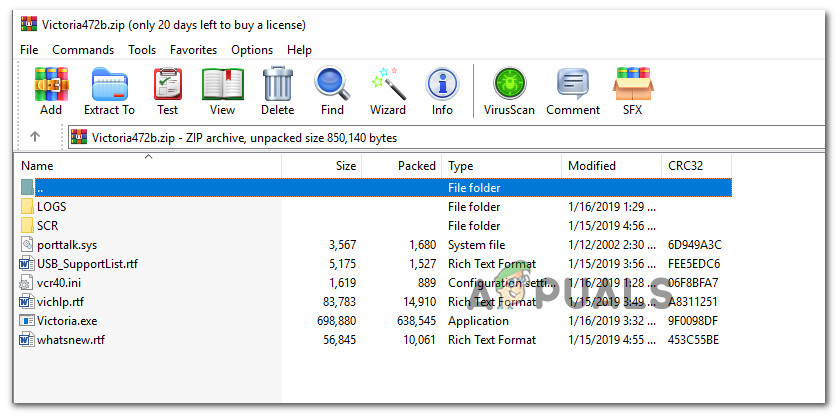
Extracting the Victoria freeware program - Right-click on Victoria.exe and choose Run as administrator to ensure that the program has admin privileges.
- First things first, select the hard drive that is causing the “Disk does not have enough space to replace bad clusters” error by going to Standard and selecting the drive from the right-hand panel.
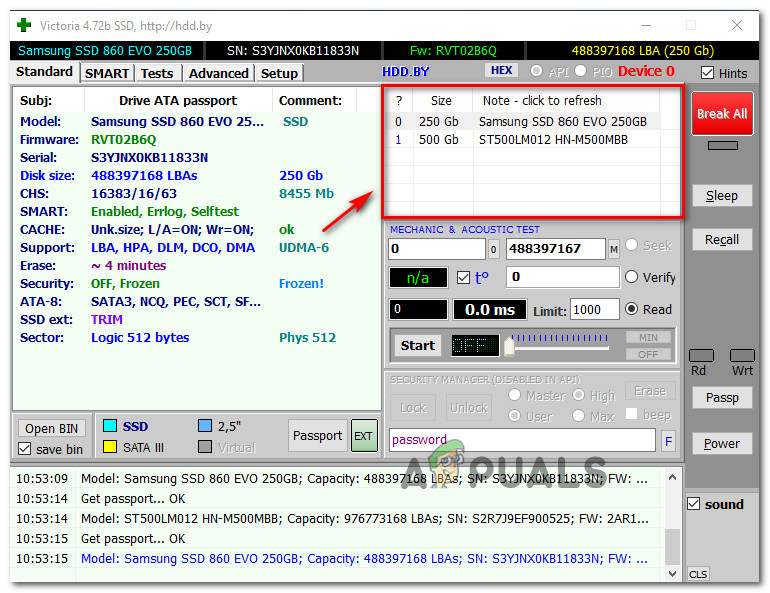
Selecting HDD that is causing the issue - No, go over to the Smart tab and click the Get SMART button to get a thorough analysis on what’s going on with your drive. Now, there are two things we need to look at while we’re here. After the analysis is complete, check the Reallocated sector count. If the number is higher than 10, it’s clear that the error is not a false positive and you’re actually dealing with bad sectors. Also, check the state of your drive (near the Get SMART button) – if the status is GOOD, chances are you will be able to resolve the issue and continue using the HDD.
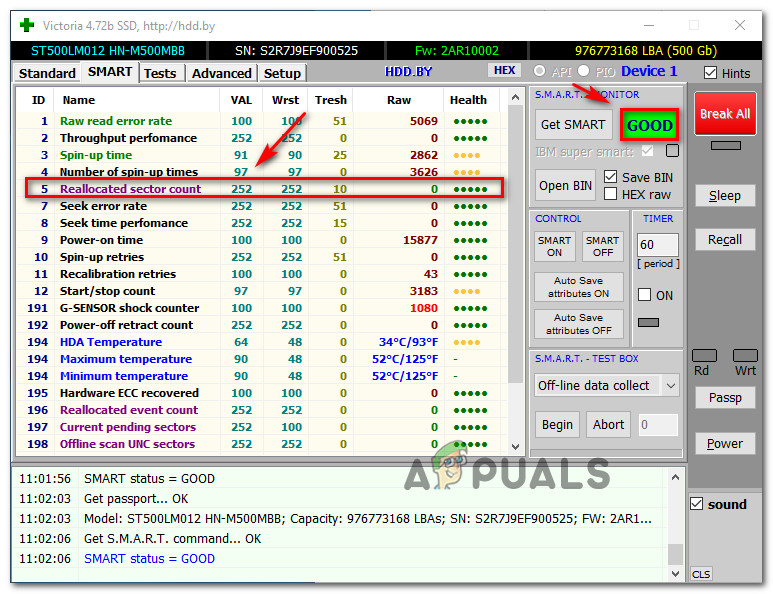
Checking for evidence of bad sectors on your HDD with Victoria Note: Keep in mind that the SMART function will not work with USB drives.
- Move over to the Tests tab and click on Scan to scan begin scanning your drive for any problems. By default, the utility is configured to cover the entire drive, but you can adjust the Start LBA and END LBA attributes to focus the search if you know where the bad sectors are located.
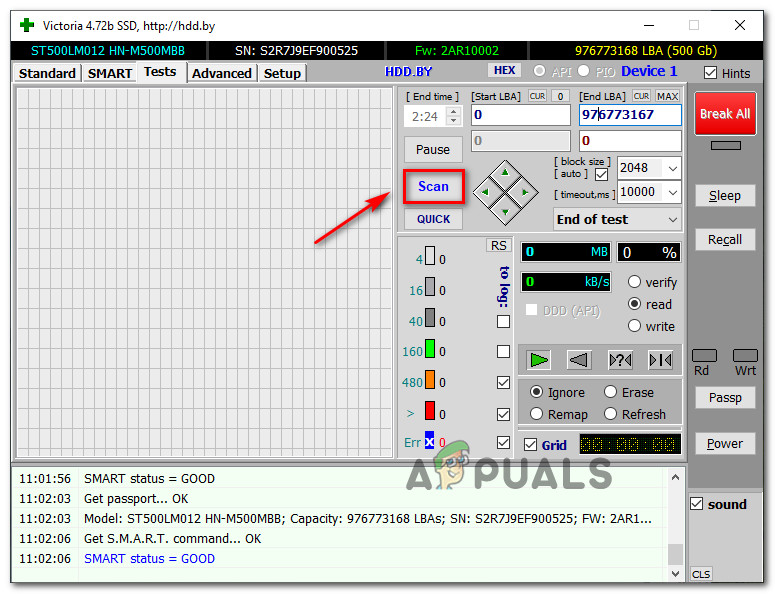
Scanning for bad Sectors with Victoria Note: You can also use the Quick scan mode, but we advise you against it as it might fail to recognize some bad sectors.
- Once the scan is underway, go down to the menu under the write speed and choose the Remap toggle from the list. This mode will ensure that the program will replace the bad sectors with good sectors from the drive’s reserved area.
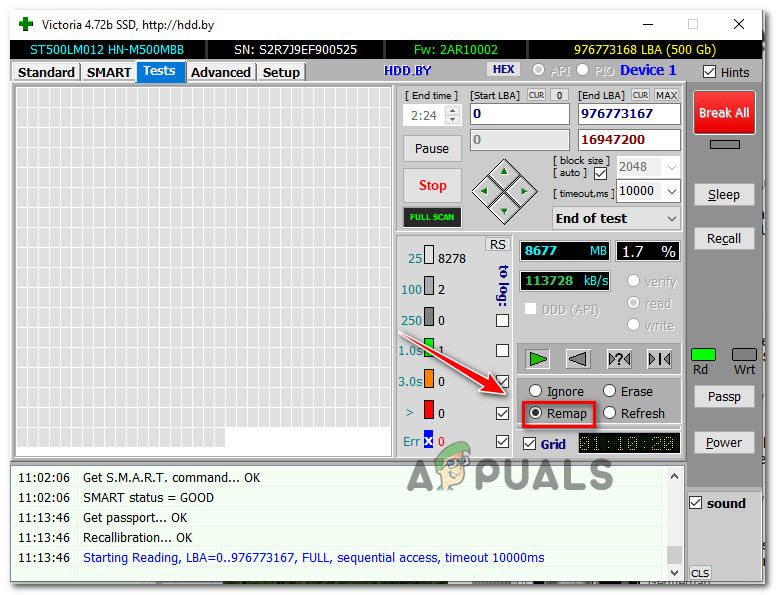
Remapping the bad sectors - Once the scan is complete, close Victoria and run another CHKDSK scan again to see if the issue has been resolved. If you’re still encountering the same issue, open Victoria gain, run another scan (as shown at step 7) but this time choose Refresh. This will repair any sectors that are damaged at a software level.

Repairing software-related sectors - Restart your computer and see if the “disk does not have enough space to replace bad clusters” error is still occurring at the next CHKDSK scan.
If you find that the method is still occurring, move down to the next method below.
Method 3: Backing up your drive & replace the failing drive
If the methods above didn’t allow you to resolve the error message, it obvious that your hard drive is failing. If both the CHKDSK utility and Victoria have been unable to replace the bad sectors with extra sectors, it’s clear that you have an alarmingly high number of corrupted sectors.
The problem with this is, you can’t really stop a failing disk from failing. The number of bad sectors will continue to rise until it will eventually eat away from your data.
The best course of action, in this case, is to back up your drive as soon as possible and replace the failing drive with a new one.
Creating a backup for your failing drive is easy, as there are a lot of tools that will help you get the job done. We’ve recently posted a great article about the best cloning software that will allow you to backup your data. Check it out (here).




